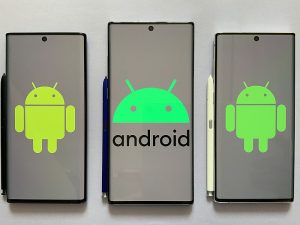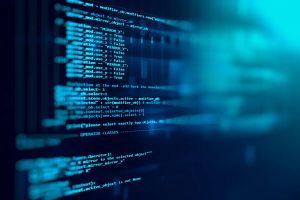Which Haiti-Quake Charities are Getting It Done?
![]() We all know by now about the horrific Haiti quake and how it has decimated that already impoverished country’s infrastructure last week. I have been spending time looking into how our own charitable infrastructure is holding up in getting funds and manpower to the relief effort. So far, the efforts have been mixed, to say the least, although not lacking in the best of intentions.
We all know by now about the horrific Haiti quake and how it has decimated that already impoverished country’s infrastructure last week. I have been spending time looking into how our own charitable infrastructure is holding up in getting funds and manpower to the relief effort. So far, the efforts have been mixed, to say the least, although not lacking in the best of intentions.
Various relief agencies, including the Red Cross, Salvation Army, Doctors Without Borders, and others have collected millions of dollars seemingly overnight. Many of these groups are using the tech services of either mGive.com or the Mobile Giving Foundation. I have seen numbers for the total collected with these providers at more than $20 million. Considering that most of these donations have been $10 ones that were charged to individual’s cell phone bills, it is an
impressive donations velocity. Both vendors make systems that allow people to text one of a series of messages for supporting these organizations. Mobile Giving probably the most comprehensive list of Haitian-related charities.
The Mobile Giving and mGive donations are what is called unrestricted donations, meaning you’re your funds aren’t going directly for Haitian relief, but for the organizations to do what they wish with the money. Having volunteered several times at the Red Cross, I can also tell you that donors that direct their donations for a particular event there are really paying it forward – just like I wrote about Kiva.org’s efforts, when you call the Red Cross and say you want to support the
Haiti relief efforts, in reality you are giving money to their “International Relief Fund” which has already sent money collected from prior efforts to help Haitians today. Think of this as more of a revolving fund, with the hope that monies coming in can balance the outflows, or do even better to help less publicized causes.
But there is a problem with donating through text messages. The carriers normally place a 60 to 90 day hold on disbursing all the funds collected. This is to cover their float for those people that have a change of heart when they get their monthly cell bills, or just don’t pay them promptly, or other reasons. Some of the carriers have decided to go ahead and distribute the donations without waiting, which is admirable.
Mobile Giving and mGive aren’t the only games in town, and others have taken up the cause by organizing Facebook groups and fan pages to attract donors. Sadly, some of these are fakes, as MSNBC pointed out.
Many stories have focused on how cell phone service is for the most part operating in Haiti, unlike the landlines, which for the most part aren’t. Why is this the ![]() case? Mainly because the cell towers have been constructed with the poor electric grid from day one. Each cell tower has a diesel backup generator – which is common practice in many developing countries – but the difference is that they were built to store several days’ worth of fuel to provide running backup power.
case? Mainly because the cell towers have been constructed with the poor electric grid from day one. Each cell tower has a diesel backup generator – which is common practice in many developing countries – but the difference is that they were built to store several days’ worth of fuel to provide running backup power.
While that means that the cell companies have to get fuel to their towers, right now this is one of the reasons why they can still make connections. Similarly the broadband wireless data services like those supporting Blackberries seem to be working too. What about getting food and water and medical supplies – and aid
workers — airlifted to Haiti? This is a big problem currently, as many of the news outlets have reported: the tiny airport is overwhelmed with flights, and a few have had to be turned back because they couldn’t get a landing slot. The air traffic tower was damaged, and imagine trying to run a busy airport like LaGuardia or O’Hare by having the controllers sit quite literally on the field – even with a single runway, it is a challenge. The US is running operations there at the airport, by the way. The nearest international airport is a six-hour drive away in the Dominican Republic, and that has been the path that some flights have had to take if they couldn’t land inPort-au-Prince.
That is how the International Rescue Committee is getting its own aid workers there. I spoke to David Goodman, a good friend of mine who is the organization’s CTO. The IRC has emergency staff on the ground and more are arriving throughout the week. They have been using a Mobile Giving cellphone donation system, “and fortunately we started our Mobile Giving campaign during the holiday season in NYC taxi cabs and so we had that infrastructure in place prior to the Haiti quake.” ![]() The IRC is part of a consortium of 28 organizations called NetHope (www.nethope.org) that provides common IT services for relief efforts, and as you imagine there have already been conference calls to pool efforts to obtain connectivity in Haiti that can be shared. Goodman himself has been to Africa several times to set up C-band satellite links for their offices and tells me that, like Africa, Haitian Internet access is still pretty spotty, although the situation is
The IRC is part of a consortium of 28 organizations called NetHope (www.nethope.org) that provides common IT services for relief efforts, and as you imagine there have already been conference calls to pool efforts to obtain connectivity in Haiti that can be shared. Goodman himself has been to Africa several times to set up C-band satellite links for their offices and tells me that, like Africa, Haitian Internet access is still pretty spotty, although the situation is
changing minute by minute as more resources get established on the ground.
In my call with Goodman, we talked about the issue of having a low overhead organization and being held to that metric by charitable givers. “We spend 90% of donations on our programs and the low overhead is attractive to lots of donors. If I could spend more money to give our aid workers better communications tools I would. It would help increase their productivity even more.” It made me stop and think about my own criteria for donations. I ended up giving money to Partners in Health (pih.org), a group that has medical teams already in Haiti. I wanted to see an immediate benefit of my donation and thought they would be in the best position to help.
A message from John Furrier, co-founder of SiliconANGLE:
Your vote of support is important to us and it helps us keep the content FREE.
One click below supports our mission to provide free, deep, and relevant content.
Join our community on YouTube
Join the community that includes more than 15,000 #CubeAlumni experts, including Amazon.com CEO Andy Jassy, Dell Technologies founder and CEO Michael Dell, Intel CEO Pat Gelsinger, and many more luminaries and experts.
THANK YOU















